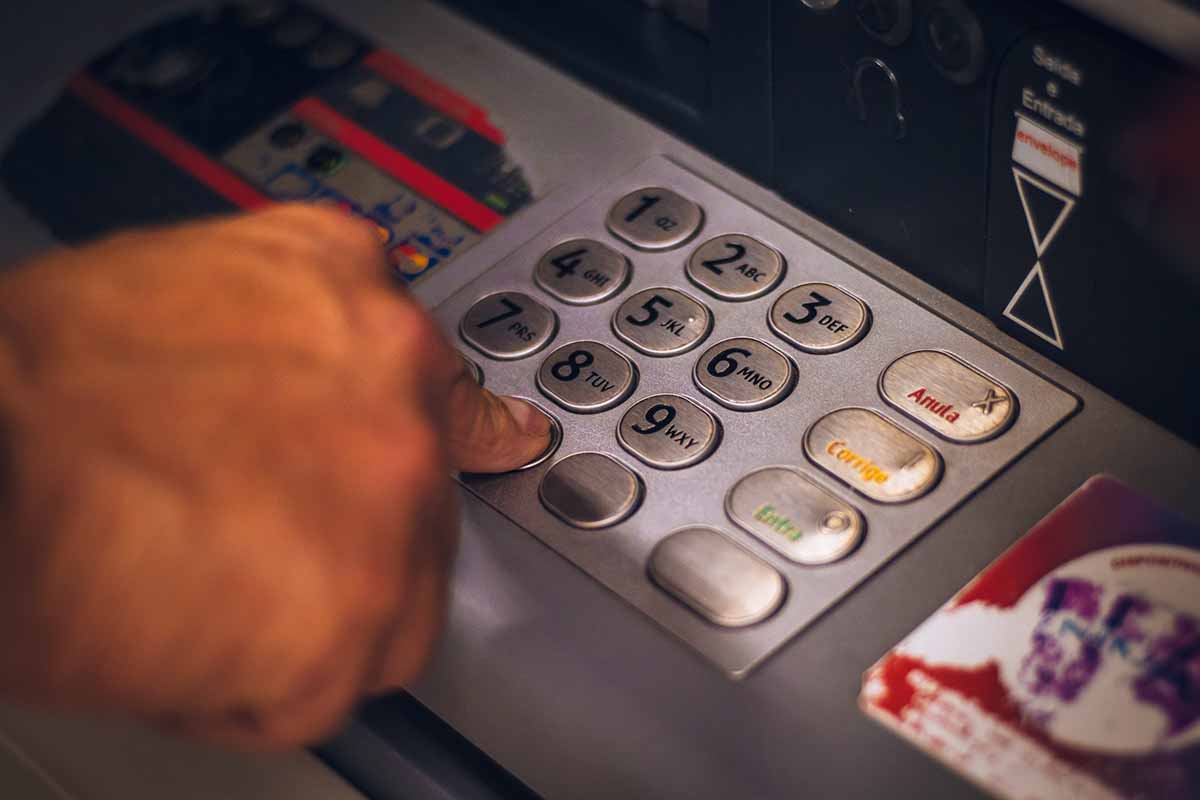Home>Finance>How Long Should I Use A Secured Card Before Upgrading To A Regular Credit Card?


Finance
How Long Should I Use A Secured Card Before Upgrading To A Regular Credit Card?
Published: March 1, 2024
Learn when to upgrade from a secured card to a regular credit card in finance. Discover the ideal duration for building credit and improving your financial standing.
(Many of the links in this article redirect to a specific reviewed product. Your purchase of these products through affiliate links helps to generate commission for LiveWell, at no extra cost. Learn more)
Table of Contents
- Understanding the Transition from a Secured Card to a Regular Credit Card
- Demystifying the Concept of Secured Credit Cards
- Leveraging Secured Credit Cards to Strengthen Your Credit Profile
- Key Considerations for Transitioning from a Secured Card to a Regular Credit Card
- Determining the Optimal Duration for Utilizing a Secured Credit Card
- Navigating the Transition from a Secured Card to an Unsecured Credit Card
- Navigating Your Credit Journey with Confidence
Introduction
Understanding the Transition from a Secured Card to a Regular Credit Card
Are you considering upgrading from a secured credit card to a regular credit card? This transition marks a significant milestone in your financial journey, signifying improved creditworthiness and financial stability. Understanding the nuances of this progression is crucial for making informed decisions about your credit management. In this comprehensive guide, we will delve into the intricacies of secured cards, the process of building credit with them, and the factors to consider before making the transition to a regular credit card. Additionally, we will explore the optimal duration for using a secured card before upgrading and outline the essential steps involved in the upgrade process.
Transitioning from a secured credit card to an unsecured one is a pivotal step that reflects your growing financial responsibility and creditworthiness. This shift signifies that you have successfully built a positive credit history and improved your credit score, making you eligible for a wider range of credit products with favorable terms and benefits. Understanding the journey from a secured card to a regular credit card empowers you to make informed decisions that align with your financial goals and aspirations.
Throughout this guide, we will provide insights into the process of building credit with a secured card, elucidate the key factors to consider before upgrading, and outline the recommended duration for utilizing a secured card before making the transition. By gaining a comprehensive understanding of this transition, you will be equipped with the knowledge to navigate this significant milestone in your financial life with confidence and clarity.
Understanding Secured Cards
Demystifying the Concept of Secured Credit Cards
Secured credit cards serve as a valuable financial tool for individuals aiming to establish or rebuild their credit. Unlike traditional unsecured credit cards, secured cards require a cash deposit that serves as collateral, mitigating the risk for the issuer. This deposit typically determines the card’s credit limit, providing a sense of security for both the cardholder and the issuing financial institution.
One of the primary advantages of secured cards is their accessibility, making them an ideal option for individuals with limited or damaged credit history. By leveraging the security deposit, cardholders can demonstrate responsible credit usage and gradually improve their creditworthiness. Additionally, secured cards offer a pathway for individuals with no credit history to embark on their credit-building journey, laying a foundation for future financial endeavors.
While secured cards share similarities with traditional credit cards in terms of functionality, they play a distinct role in the realm of credit building. As cardholders utilize their secured cards for everyday expenses and diligently make on-time payments, they contribute to the establishment of a positive credit history, a pivotal factor in shaping their financial future. Furthermore, the responsible use of a secured card can lead to an enhanced credit score, paving the way for broader financial opportunities.
Understanding the fundamental principles of secured credit cards is essential for individuals seeking to fortify their financial standing. By comprehending the nuances of secured cards, cardholders can leverage these financial instruments to embark on a journey toward improved creditworthiness and financial stability.
Building Credit with a Secured Card
Leveraging Secured Credit Cards to Strengthen Your Credit Profile
Secured credit cards offer a strategic avenue for individuals to embark on or revitalize their credit-building endeavors. By utilizing a secured card responsibly, cardholders can lay a solid foundation for a positive credit history and bolster their overall credit profile. The following insights shed light on the process of building credit with a secured card:
- Responsible Credit Utilization: When using a secured card, it is crucial to maintain a low credit utilization ratio, ideally below 30% of the available credit limit. This prudent approach demonstrates responsible credit management and can positively impact your credit score over time.
- Timely Payments: Making on-time payments is a cornerstone of credit building. By consistently paying your secured card balance in full and on schedule, you establish a track record of financial reliability, which is reflected in your credit report.
- Monitoring Credit Activity: Regularly monitoring your credit card activity and staying abreast of your credit report enables you to identify any discrepancies or potential issues. This proactive approach empowers you to address any concerns promptly and maintain the integrity of your credit profile.
- Gradual Credit Limit Increases: Some secured card issuers offer opportunities for credit limit increases based on your responsible card usage and payment history. A higher credit limit can contribute to a lower credit utilization ratio, further bolstering your creditworthiness.
By conscientiously adhering to these credit-building practices, individuals can leverage secured credit cards as a stepping stone toward a robust credit profile. This proactive approach lays the groundwork for future financial milestones, such as qualifying for unsecured credit cards with more favorable terms and embarking on substantial financial endeavors.
Building credit with a secured card entails a deliberate and disciplined approach, ultimately leading to the cultivation of a positive credit history and enhanced financial opportunities.
Factors to Consider Before Upgrading
Key Considerations for Transitioning from a Secured Card to a Regular Credit Card
Before initiating the transition from a secured credit card to a regular credit card, it is essential to assess various factors that can influence the timing and suitability of this progression. Consider the following crucial aspects before upgrading to an unsecured credit card:
- Credit Score Improvement: Evaluate the trajectory of your credit score since obtaining the secured card. A noticeable improvement in your credit score indicates that you have successfully demonstrated responsible credit management, potentially making you eligible for a regular credit card with more favorable terms.
- Financial Stability: Assess your current financial standing and stability. A secure financial foundation, including steady income and prudent budgeting, can bolster your confidence in managing a regular credit card effectively.
- Debt Repayment Habits: Reflect on your debt repayment practices. Consistently paying off your secured card balance in full showcases responsible financial behavior, indicating readiness for the transition to an unsecured credit card.
- Utilization of Credit Limit: Analyze your utilization of the secured card’s credit limit. Maintaining a low credit utilization ratio signifies disciplined credit usage, a favorable indicator for potential unsecured credit card eligibility.
- Comparison of Credit Card Offers: Research and compare various regular credit card offers to identify one that aligns with your financial goals and lifestyle. Consider factors such as rewards, annual fees, and interest rates to make an informed decision.
By conscientiously evaluating these factors, individuals can make a well-informed decision regarding the transition from a secured credit card to a regular credit card. This thoughtful approach ensures that the timing and circumstances are conducive to a smooth and beneficial upgrade, setting the stage for continued financial progress and stability.
How Long Should You Use a Secured Card?
Determining the Optimal Duration for Utilizing a Secured Credit Card
The duration of utilizing a secured credit card before upgrading to a regular credit card varies based on individual financial circumstances and credit goals. While there is no definitive timeline applicable to everyone, several key considerations can guide the decision-making process:
- Credit Score Progression: Monitor the progression of your credit score over time. As your credit score improves due to responsible card usage and timely payments, you may reach a point where you qualify for a regular credit card that better aligns with your financial needs.
- Financial Discipline: Evaluate your financial habits and discipline. Consistently demonstrating responsible credit management, including prudent spending and timely payments, indicates readiness for the transition to an unsecured credit card.
- Strengthening Credit History: Building a robust credit history through the use of a secured card is instrumental in enhancing your creditworthiness. The duration required to establish a positive credit history varies, and it is essential to assess your progress in this aspect.
- Issuing Bank’s Policies: Some financial institutions may have specific policies regarding the transition from secured to regular credit cards. Familiarize yourself with your issuer’s guidelines and criteria for potential upgrades.
It is important to approach the duration of utilizing a secured card with a proactive and informed mindset. Regularly assessing your credit journey, financial stability, and credit score evolution empowers you to make a well-timed and advantageous transition to a regular credit card when the conditions are favorable.
Ultimately, the decision to upgrade from a secured credit card hinges on a culmination of these factors, reflecting your readiness to manage an unsecured credit card responsibly and leverage enhanced financial opportunities.
Steps to Upgrade to a Regular Credit Card
Navigating the Transition from a Secured Card to an Unsecured Credit Card
Transitioning from a secured credit card to a regular credit card involves a series of strategic steps to ensure a seamless and beneficial upgrade. The following guidelines outline the essential steps for navigating this progression:
- Assess Your Credit Standing: Review your credit score and credit report to gauge your eligibility for a regular credit card. A demonstrable improvement in your credit score and a positive credit history are favorable indicators for the upgrade.
- Engage with Your Current Issuer: Initiate a conversation with your secured card issuer to explore potential options for transitioning to an unsecured credit card. Inquire about their specific procedures and criteria for upgrading.
- Consider Issuing a New Application: Research and compare regular credit card offers from various issuers. If your current issuer does not offer a clear pathway for an upgrade, submitting a new application for an unsecured credit card with another reputable institution is a viable alternative.
- Manage Outstanding Balances: Ensure that your secured card balance is at a manageable level before initiating the transition. Responsible debt management reflects positively on your credit profile and enhances your eligibility for an unsecured credit card.
- Utilize Prequalified Offers: Explore prequalified credit card offers, which can provide insights into potential unsecured card options that align with your credit profile. Prequalification can streamline the application process and offer tailored card recommendations.
- Monitor Upgrade Opportunities: Stay informed about upgrade opportunities provided by your current issuer. Some secured card issuers proactively review cardholder accounts for potential transitions to regular credit cards based on responsible card usage and creditworthiness.
By diligently following these steps, individuals can navigate the transition from a secured credit card to a regular credit card with clarity and purpose. This proactive approach empowers cardholders to leverage improved credit standing and embrace the enhanced financial flexibility offered by unsecured credit cards.
Conclusion
Navigating Your Credit Journey with Confidence
The journey from a secured credit card to a regular credit card signifies a significant milestone in your financial growth and credit management. By comprehending the nuances of secured cards, diligently building credit, and assessing the opportune moment for an upgrade, you equip yourself with the knowledge to navigate this transition with confidence and purpose.
Utilizing a secured credit card as a stepping stone toward a strengthened credit profile empowers individuals to demonstrate financial responsibility, cultivate a positive credit history, and pave the way for broader financial opportunities. The strategic use of a secured card, coupled with disciplined credit management practices, sets the stage for a seamless transition to a regular credit card when the time is right.
As you progress through your credit journey, it is essential to remain proactive in monitoring your credit standing, engaging with your card issuer, and exploring potential upgrade pathways. By staying informed about your credit options and diligently managing your financial responsibilities, you position yourself for a successful transition to an unsecured credit card, unlocking enhanced benefits and flexibility.
Ultimately, the transition from a secured card to a regular credit card represents a testament to your financial growth and creditworthiness. Embrace this evolution with a sense of accomplishment, knowing that your thoughtful credit management has opened doors to expanded financial horizons and opportunities.
With a comprehensive understanding of the transition process and a proactive approach to credit management, you are poised to embark on this next phase of your financial journey with clarity, confidence, and a firm foundation for continued success.














